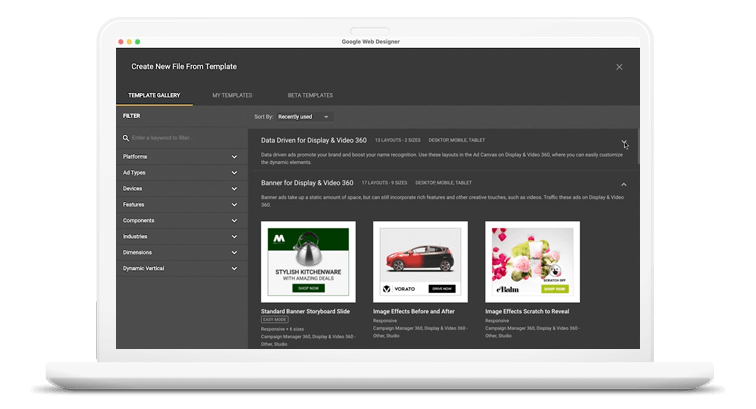Modern Website Design That Captures Attention and Converts
In an increasingly electronic landscape, contemporary web site layout has actually become a critical consider catching user focus and driving conversions. By tactically utilizing aesthetic hierarchy, receptive layouts, and involving interactive components, designers can produce experiences that not only draw in visitors yet also facilitate significant interactions. Effective call-to-action techniques play an important role in guiding individuals towards desired end results. As we check out these important parts, it becomes clear that comprehending their interplay can significantly impact a web site's performance and customer complete satisfaction. What are the essential components that genuinely make a distinction?
Significance of Visual Power Structure
Visual hierarchy is a crucial element in website style, as it overviews users' attention and boosts their overall experience. By tactically organizing content, designers can guide customers to one of the most vital info initially, consequently raising interaction and enhancing usability. Efficient aesthetic power structure utilizes different methods, including dimension, shade, comparison, and spacing. Bigger components naturally draw the eye, while contrasting shades can stress key messages, making them stick out among even more restrained components.
Integrating a logical circulation in material setup is important; for example, putting one of the most vital info on top of a web page promotes immediate recognition. Moreover, regular usage of typography, such as varying font sizes and styles, helps establish a clear material framework. This company not only aids in navigation however also constructs count on, as individuals feel much more comfortable when they can quickly locate what they are looking for.
Ultimately, a well-executed aesthetic hierarchy not just boosts aesthetic allure but likewise dramatically influences individual actions. By prioritizing crucial aspects and making certain a smooth experience, designers can properly transform site visitors right into consumers, enhancing the relevance of this fundamental layout principle in modern site advancement.
Responsive Design for All Tools
Creating a seamless experience across numerous devices is necessary in today's digital landscape, where customers access internet sites from tablets, desktops, and smart devices alike. Receptive style is a critical strategy that ensures websites adjust fluidly to different display resolutions, positionings, and dimensions. By utilizing versatile grids, pictures, and CSS media queries, developers can produce layouts that keep visual stability and functionality, no matter of the device being utilized.
The value of responsive layout expands past aesthetic appeals; it directly influences individual interaction and conversion rates. A web site that operates well on all devices motivates longer visits and reduces bounce rates, as customers are most likely to connect with web content that is easy to navigate. In addition, search engines, specifically Google, prioritize mobile-friendly sites in their rankings, making receptive style an essential element of seo (SEO)
Incorporating receptive layout not only boosts customer experience but also streamlines the advancement procedure. By producing a solitary site that functions across tools, services can conserve time and resources contrasted to establishing separate mobile and desktop variations. Eventually, receptive style is an essential technique for modern-day site layout, making certain availability and contentment for all individuals, no matter of their gadget.
Involving Interactive Aspects
While a responsive layout prepares for a useful web site, integrating appealing interactive elements is crucial for catching user interest and cultivating deeper connections. Website Design. Interactive elements, such as animations, quizzes, and clickable infographics, develop a much more dynamic customer experience, encouraging site visitors to spend more time on the site
Integrating interactive functions can likewise guide users via complicated details, making it easier to digest material. As an example, interactive sliders can highlight product variations, while embedded video clips can offer demonstrations or testimonials that resonate greater than static pictures or text. Gamification techniques, like incentives for involving or finishing tasks with material, can enhance individual inspiration and retention.
Efficient use interactive components not just improves the customer web link experience yet can also bring about higher conversion prices. By making communications useful and pleasurable, services can cultivate a feeling of loyalty and trust fund with their audience. It is essential to stabilize interactivity with performance; overly intricate attributes may hinder site speed, adversely impacting user contentment. Eventually, integrating properly designed interactive components can substantially boost a site's efficacy, driving engagement and conversions in today's competitive electronic landscape.
Streamlined Navigating Practices
Reliable navigation is a keystone of any kind of successful web site, as it straight affects user experience and web content access. Structured navigation practices guarantee that customers can quickly find info, improving their communication with the site. A well-structured navigating menu must be user-friendly and straightforward, commonly featuring a restricted variety of key groups to stay clear of overwhelming site visitors.
To achieve structured navigation, developers ought to focus on an ordered framework that realistically arranges content. Implementing breadcrumb routes can supply customers with context about their existing location within the website, permitting smooth backtracking. Furthermore, using drop-down menus can efficiently save area while still providing accessibility to subcategories.
Responsive layout is important, as navigation needs to be useful throughout all devices (Website check out here Design). Mobile users, in certain, gain from touch-friendly food selections and retractable sections that preserve functionality without jeopardizing aesthetics

Effective Call-to-Action Approaches
A well-crafted call-to-action (CTA) is important for guiding users towards preferred results on a website, as it urges them to involve with web content or purchase. To optimize their effectiveness, CTAs need to be clear, compelling, and purposefully placed throughout the site.
First, utilize action-oriented language that interacts seriousness or value, such as "Get going," "Sign up with Currently," or "Case Your Price cut." This language not only encourages users but additionally establishes clear expectations about the next steps.
Second, consider style elements; CTAs ought to attract attention aesthetically via contrasting shades, adequate whitespace, and famous positioning. A button that is very easy to see and click increases the chance of individual interaction.
Additionally, customizing CTAs based on individual actions or demographics can significantly improve involvement. Customized messages resonate extra with individuals, driving higher conversion prices.

Conclusion
To conclude, modern-day web site design stresses the assimilation of aesthetic power structure, responsive formats, involving interactive aspects, streamlined navigation, and effective call-to-action techniques. These parts jointly improve customer experience, guaranteeing that site visitors stay involved and motivated to check out material even more. By prioritizing these style principles, companies can substantially enhance individual retention and conversion rates, eventually leading to better success in the electronic landscape. The continual advancement of internet layout underscores its critical function in efficient online interaction and advertising.
In a significantly digital landscape, modern-day site style has actually arised as a pivotal variable in capturing individual focus and driving conversions.Visual pecking order is a critical component in web site design, as it overviews users' interest and enhances their total experience.The significance of responsive layout prolongs past visual appeals; it directly affects user involvement and conversion rates.Including receptive style not just boosts user experience yet also streamlines the advancement process. Eventually, responsive style is a fundamental method for modern internet site design, making certain ease of access and satisfaction for all customers, no matter of their device.